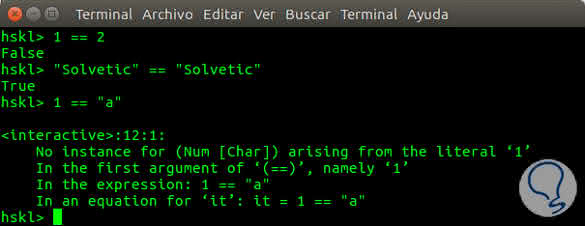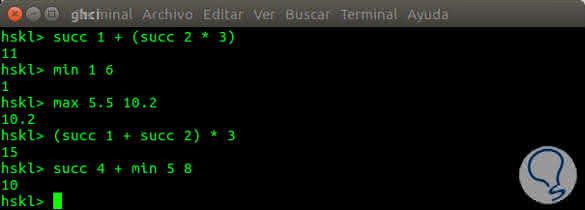We are going to see an introduction to the Haskell programming language , it is a functional language . In this type of languages ​​the functions will perform a calculation and will return something, it does not have any side effects. In addition, the variables can only take one value, that is, if we have a variable called n that we assign the value of 10, n will be 10, we can not make it count as 14, or 3..
Haskell is a statically typed language , another Java language example is Java , this means that when we compile a code the compiler will know what type of data belongs to a part of memory (integer, string, character, boolean, etc.), unlike what happens in dynamic languages, such as Python or Ruby .
This language makes lazy evaluations , it will not calculate until a value is completely necessary, it will also prevent that evaluation from being repeated if we need the calculation later. For exponential functions it is something interesting, since it will help to reduce the execution time..
After an introduction to some of the characteristics of the language, we will start with the action, the tutorial will be completely practical, the first thing we will need is to install Haskell in our system, for this tutorial we will use Ubuntu, therefore I will execute the following command in the terminal:
sudo apt-get install haskell-platform
If you use another operating system then we leave a button to the official Haskell page, where you will find how to proceed with the installation, whether it is Windows, Mac or another Linux distribution:
DOWNLOAD HASKELL
Let's start with the practice, we will divide the tutorial into examples, starting with the simplest ones.
Example 1
Let's start by launching the Haskell console, for this in a terminal we will write the following command:
ghci
As you can see, it loads us:

The promp is Prelude, we can change it, in this case we are going to put it in hkl, for this we will execute:
: set prompt "hskl>"
We see how it has changed:

To finish with the first example, we will see how to do some operations in this console, below is the capture of the examples, we can see a sum, a division (we see that it shows us decimals, in other languages ​​we would have returned the whole part ), and an operation with parentheses, to appreciate its function..

Note
If we want to leave the Haskell console, we write:
: q
And we give enter.
Example 2
In the following example we will work with Boolean data types, you can see the following image to understand its use:

It does not require further explanation, we use and ( && ) and or ( || ), in addition to the denial ( not ). At the moment everything is easy, as we can see.
Example 3
We can compare strings, numbers, as we do in the rest of languages, let's see how it works:

The comparison between different types gives us an error, as expected.
Example 4
In this example we will see functions that we have in Haskell, that we will probably use often:

We explain the functions seen in the previous capture:
- succ x : Returns the successor of x, if x is 3, decuelve 4.
- min xy : Returns the minimum number between x and y, if y is 3 and x is 2, returns x.
- max xy : Returns the maximum of x and y, in the example of 3 and 2, returns 3.
Example 5
In this example we are going to create some "function":

We see that we have created the exp function, what it does is squaring a number, and a function called double, which is going to return twice the number we passed to it, you can also appreciate that you can combine what a function returns with other operations such as addition.
Example 6
We will create our own maximum function, but for 3 numbers, and we will use it, then capture it:

Example 7
We are going to see other functions with which we can work in Haskell, they are simple, we are going to apply them to lists.

We see how init what it does is return the list without the last element, tail does the opposite, returns the list without the first element. If we see head, it returns the first element of the list and of course last returns the last element. And the last two functions, length gives us the length of the list and reverse returns it back to us. There are more functions, but it is not the objective of the tutorial to see all, just give an approximation so you can start working with Haskell.
Example 8
Let's see the last example that will calculate the factorial of a number, that will try to create a file, compile it and execute it, we will create a file called test.hs and in it we will add the following code:
fac n = (if n == 0 then 1 else n * fac (n-1)) main = print (fac 3)
To compile we use the following line:
ghc -o test test.hs
And to execute it we put:
./test
Then we leave the output:

Well up to here comes the tutorial on the Haskell programming language , if you already have experience programming fast you will get the hang of it, although if you are not used to functional languages ​​at the beginning your programming may be strange.